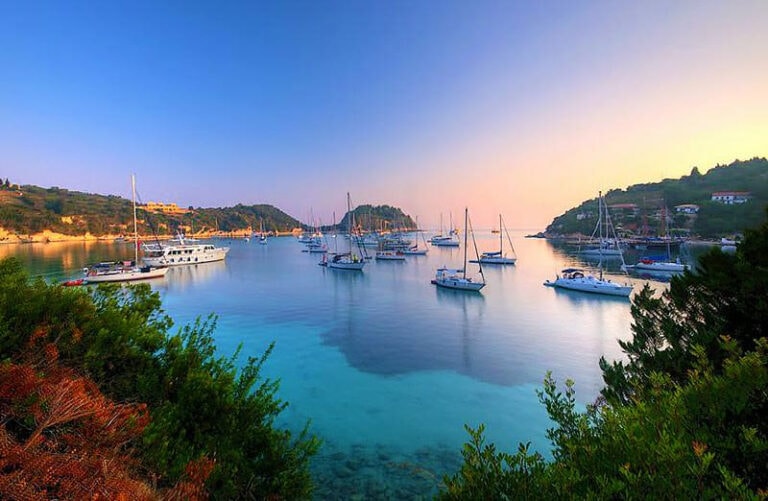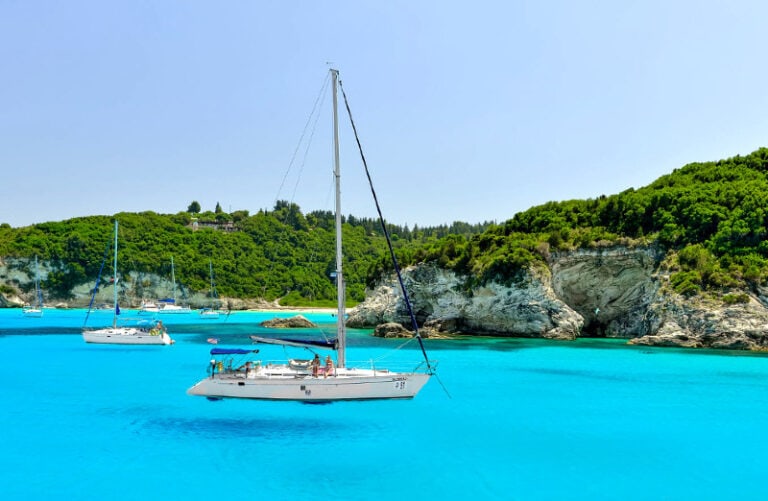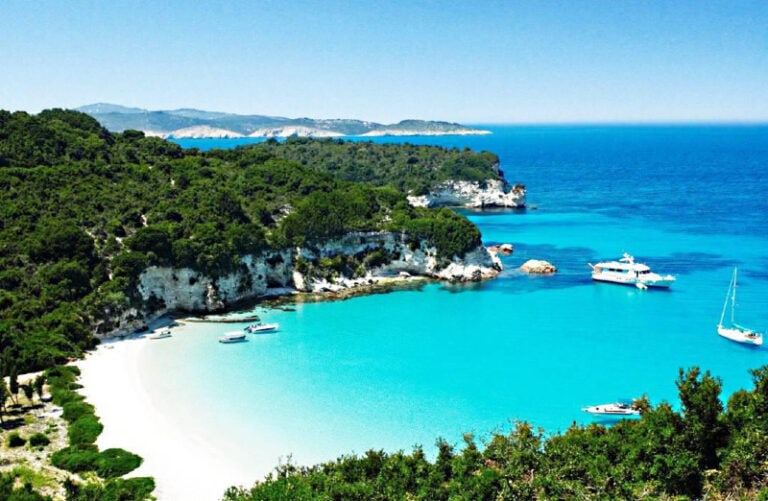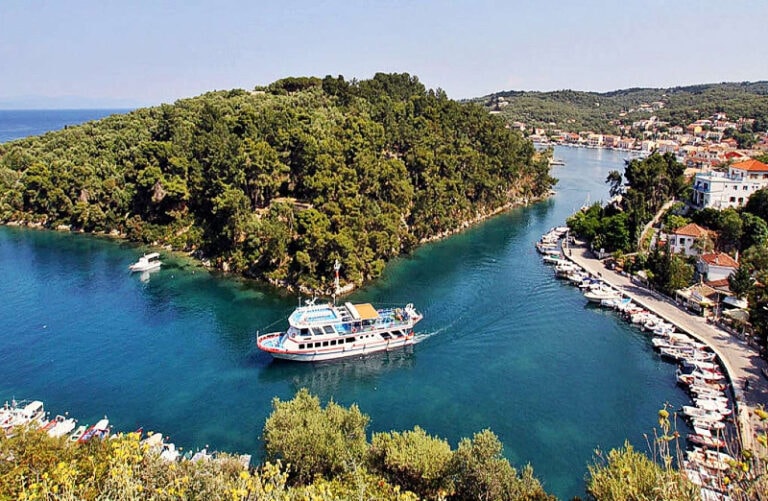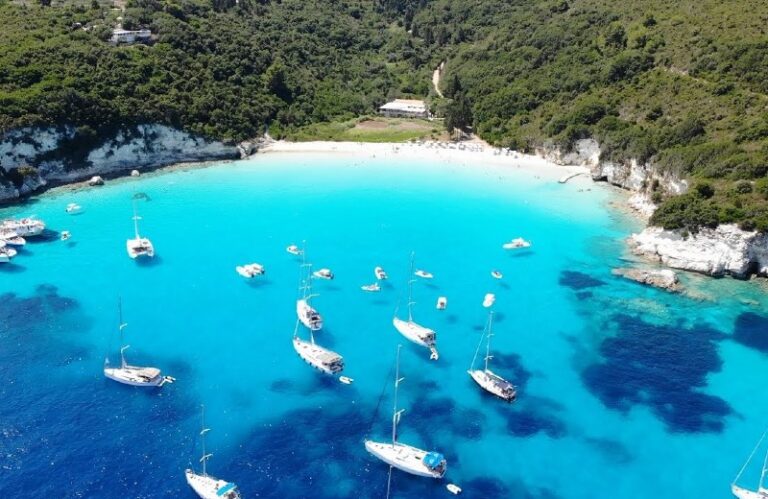Paxos
Benjamin of the Ionian Islands
Paxos (Greek: Παξοί, also known as Paxi or Paxoi), is the smallest of the Ionian Islands. In Greek, the name is a plural form and it refers to a group of islands and rocks, the most important of which are Paxos and Antipaxos (a smaller nearby island famous for its sandy beaches). In Greek mythology, Poseidon created the island by striking Corfu with his trident so that he and wife Amphitrite could have some peace and quiet.
Although possibly inhabited from prehistoric times, the Phoenicians are traditionally believed to have been the first settlers on Paxos. The name is thought to be derived from ‘Pax’, which meant ‘slate’ in their language. Romans, Crusaders, Venetians and later French and British were among the rulers of the island. Paxos united with Greece in 1864.
The landscape of Paxos largely consists of olive-orchards, and Antipaxos is mostly vineyards. The ground is elevated, forming hills, and the soil is calciferous. The eastern coastlines of the island are sloping, while the west coasts are steep, with remarkable natural formations: caves, arches, dome-shaped forms, and sheer cliffs. The three largest villages are located on the eastern side of the island: to the south is Gaios, the capital, Loggos is in the middle and Lakka is at the northern tip. Ozias, Makratika, Bogdanatika, Vlahopoulatika, Magazia, Fontana, and Mastoratika are some of the charming smaller villages and settlements scattered throughout the island.
Every year Paxos is the destination of about 250,000 tourists because of its beautiful beaches, crystal-clear waters, good weather, and the friendliness and hospitality of its people.
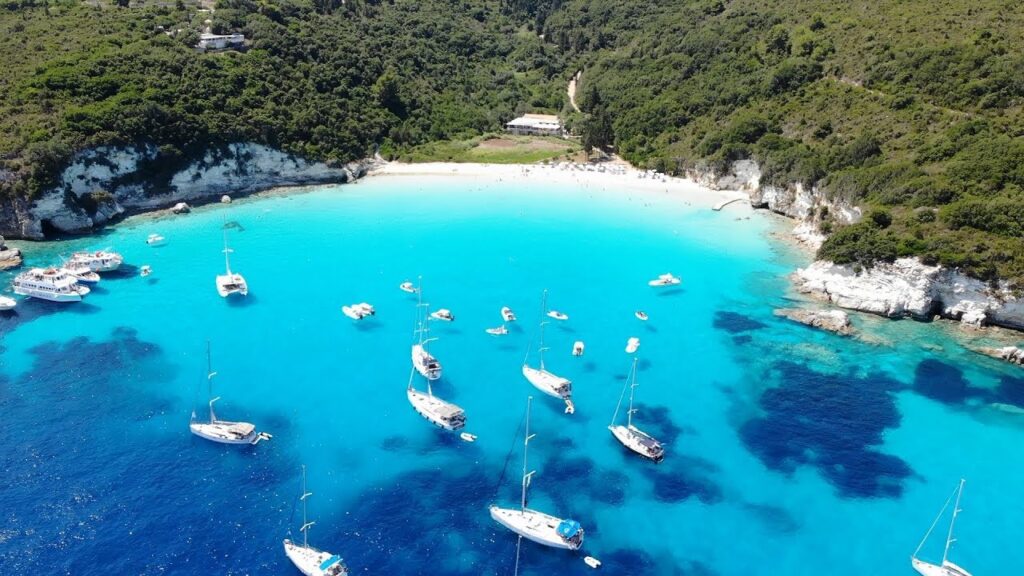
Gorgeous little Antipaxi
t’s as if the Ionian Islands took everything that makes them unique – the impossible shades of blue and lush greenery – and created perfection in miniature when it comes to two of its smallest isles. So when you visit tiny Paxoi, don’t think twice about also spending the day with its even cuter little brother, Antipaxoi.
Postage stamp-sized it might be, but Antipaxi (or Antipaxos) makes a huge impression on day-trippers from Paxi. Its handful of beaches routinely features in international best-of lists, and its romantic bays are the kind you instantly want to frame and hang on the wall of your living room. Of the island’s 150 houses, only two are inhabited during the winter months and there’s a path running down the centre of the island that takes only an hour to cover.
Naturally, boat trips focus on the beaches, but the small harbour is also charming. And, too often overlooked, is an interior of olive groves, vineyards and indigenous shrubs and forestland that seem to make every bit of the four-square kilometres of this island an earthly paradise.
Paxos Transportations - Transfers
The island of Paxos has no airport. But you can travel by plane to Corfu, then catch a ferry leaving for Paxos. The flying dolphin traveling the distance Paxos – Corfu in less than 1 hour, and from Igoumenitsa A ferry boat takes a little less than two hours. You can also travel by boat from Parga.
In Igoumenitsa visitors can also get local car ferries,which carry foot passengers and this is also a popular way for people to get to Paxos.
Another option is to hire a sea taxi (private boat), which can be a unique and enjoyable part of the journey. They usually leave from the Old Port of Corfu and take about an hour but they can also leave from Lefkimi (40 min) or Kavos (30 min.) and has the added benefit of being able to arrive at any port (not cheap although). There are 3 sea taxi’s on the Island. Sea taxi’s need to be booked well in advance.
Useful information
Port Police
Paxos: (+30) 26620 32259
Corfu: (+30) 26610 32655, (+30) 26610 39513
Igoumenitsa: (+30) 26650 99400
Transportation in Paxos
Buses, Taxis, Boats, Rent a car, Seaplanes
Buses
Two routes in winter, three in summer from Athens via Igoumenitsa.
Bus Station of Paxos, (+30) 26620 32245
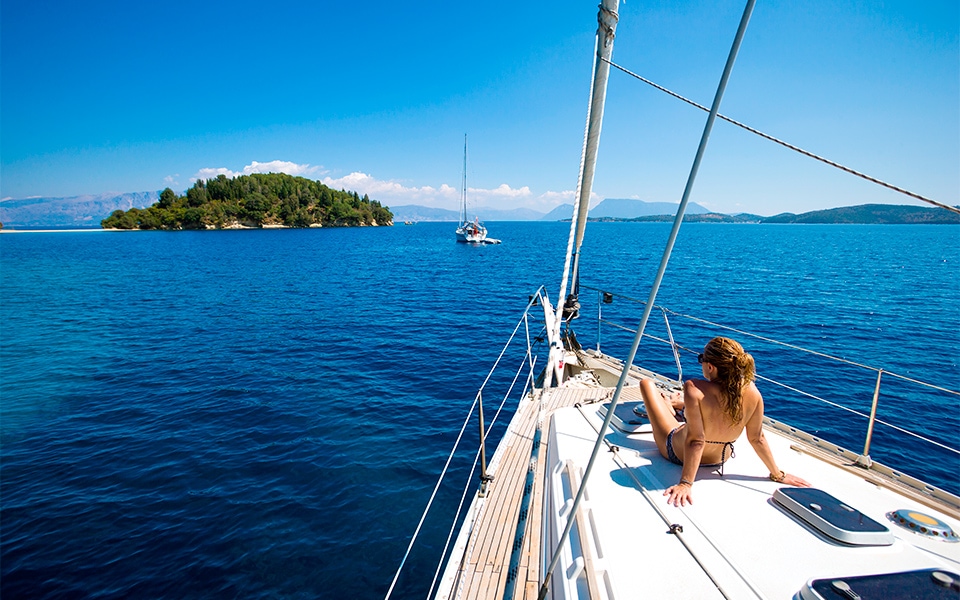
Paxos' Beaches
Paxos is a great island for anyone who loves a bit of beach life and translucent turquoise waters. The east coast is home to numerous shingle and pebbly coves with easily accessible, family-friendly beaches, while the much more rugged west coast offers dramatic cliffs and more off-the-beaten-track bays requiring a little walking.
